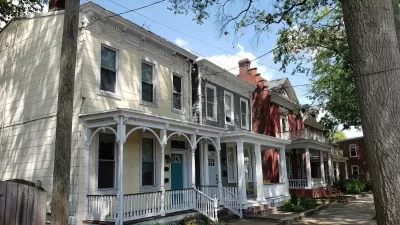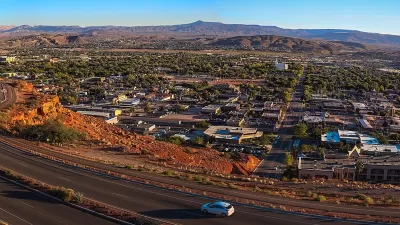Wealthy communities are incorporating their own cities, draining tax revenue and resources away from surrounding neighborhoods.

In a piece for Bloomberg CityLab, Luisa Godinez-Puig and Brian D. Smedley outline the results of their research on the secession of often wealthy, white communities from larger municipalities, such as the secession of the new city of St. George from East Baton Rouge Parish in Louisiana last month. “What we’ve found is that these secessions perpetuate modern-day segregation and limit opportunity for left-behind communities, a form of opportunity hoarding that we call ‘white fortressing.’”
According to the authors, ‘opportunity hoarding’ concentrates public resources in already advantaged areas and limits access to opportunities for other residents. “In Louisiana, it is estimated that St. George’s secession would take away $48.3 million in annual tax revenue from East Baton Rouge Parish — nearly 8% of the parish’s total tax revenue.”
Research also shows that having more governments in a certain geographic area has negative health impacts on Black, but not white, Americans. Meanwhile, “In both Louisiana and Georgia, only citizens inside the boundary of the proposed new city get to vote by referendum, even if the incorporation would decimate the tax revenue for the surrounding community.”
FULL STORY: The New ‘White Fortress’ Cities of the American South

Study: Maui’s Plan to Convert Vacation Rentals to Long-Term Housing Could Cause Nearly $1 Billion Economic Loss
The plan would reduce visitor accommodation by 25,% resulting in 1,900 jobs lost.

North Texas Transit Leaders Tout Benefits of TOD for Growing Region
At a summit focused on transit-oriented development, policymakers discussed how North Texas’ expanded light rail system can serve as a tool for economic growth.

Why Should We Subsidize Public Transportation?
Many public transit agencies face financial stress due to rising costs, declining fare revenue, and declining subsidies. Transit advocates must provide a strong business case for increasing public transit funding.

How to Make US Trains Faster
Changes to boarding platforms and a switch to electric trains could improve U.S. passenger rail service without the added cost of high-speed rail.

Columbia’s Revitalized ‘Loop’ Is a Hub for Local Entrepreneurs
A focus on small businesses is helping a commercial corridor in Columbia, Missouri thrive.

Invasive Insect Threatens Minnesota’s Ash Forests
The Emerald Ash Borer is a rapidly spreading invasive pest threatening Minnesota’s ash trees, and homeowners are encouraged to plant diverse replacement species, avoid moving ash firewood, and monitor for signs of infestation.
Urban Design for Planners 1: Software Tools
This six-course series explores essential urban design concepts using open source software and equips planners with the tools they need to participate fully in the urban design process.
Planning for Universal Design
Learn the tools for implementing Universal Design in planning regulations.
Ascent Environmental
Borough of Carlisle
Institute for Housing and Urban Development Studies (IHS)
City of Grandview
Harvard GSD Executive Education
Toledo-Lucas County Plan Commissions
Salt Lake City
NYU Wagner Graduate School of Public Service





























